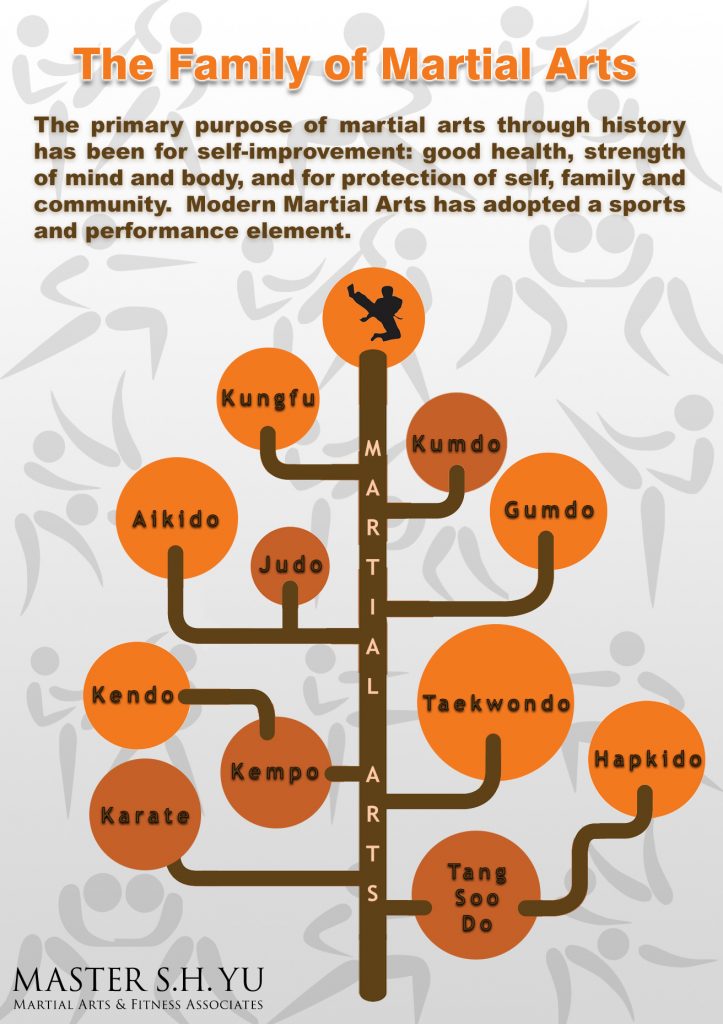A Comprehensive Evaluation Of Martial Arts: Transitioning From Martial Arts To Martial Art
A Comprehensive Evaluation Of Martial Arts: Transitioning From Martial Arts To Martial Art
Blog Article
Authored By-Banks Klausen
Did you understand that there are over 200 various designs of martial arts practiced worldwide? From Karate to Martial Art, each style offers a distinct mix of methods, viewpoints, and cultural impacts.
In this extensive summary, you will certainly explore the interesting globe of martial arts and explore the beginnings, background, and key distinctions between different styles.
From the old field of battles of Asia to the modern-day training dojos, fighting styles have actually evolved and spread out across the globe, captivating millions with their elegance, power, and discipline.
Whether you are a novice looking to delve into the world of martial arts or a knowledgeable practitioner seeking to broaden your expertise, this post will certainly give beneficial understandings right into the training methods and approaches behind each design.
Discover the tricks behind the fluid activities of Tai Chi, the explosive strikes of Muay Thai, and the self-displined precision of Taekwondo.
Prepare to embark on a trip via the diverse and fascinating globe of fighting styles!
The Origins and History of Martial Arts
Prepare to dive into the interesting beginnings and exciting background of fighting styles, from its ancient starts to the varied styles we understand and enjoy today!
Martial Arts have a rich and varied background that goes back countless years. All of it started in ancient human beings, where individuals established combat methods for protection and warfare.
In China, the earliest evidence of fighting styles can be mapped back to the Zhou Empire, around 1122-256 BCE. These early types of battle were affected by standard Chinese approaches, such as Confucianism and Taoism.
As time took place, martial arts spread to other parts of Asia, consisting of Japan, Korea, and Southeast Asia, each region establishing its very own unique styles.
Today, martial arts remain to evolve, with professionals from all over the world honing their skills and maintaining the traditions of their chosen style.
Secret Differences In Between Fighting Style Styles
Recognize the refined subtleties that identify one martial art design from an additional, and experience the extensive impact these distinctions can carry your personal growth and advancement. When comparing various martial art styles, it is very important to think about numerous factors that establish them apart. Below are some key differences to keep in mind:
- Striking Techniques:
- Karate highlights effective strikes using strikes, kicks, and knee strikes.
- Martial art focuses on a large range of strikes, including punches, kicks, and open-handed techniques like hand strikes and finger strikes.
- Viewpoint and Method:
- Martial arts areas focus on technique, regard, and self-defense.
- Kung Fu includes a broader philosophy that consists of self-defense, health and health, and spiritual development.
By recognizing these essential distinctions, you can choose the martial art style that aligns best with your objectives and aspirations, and embark on a journey of individual growth and self-discovery.
Training Strategies and Ideologies
Immerse yourself on the planet of fighting styles as you check out the special training strategies and ideologies that form the trip of self-discovery and personal development.
In how to tie a martial arts belt , training concentrates on developing rate, power, and precision through repeated activities and katas. The approach highlights self-control, respect, and self-discipline.
Kung fu, on the other hand, puts a solid emphasis on fluidness, versatility, and dexterity. It integrates a variety of activities, including kicks, strikes, and tosses, and usually includes training in animal-inspired styles. The philosophy of martial art centers around balance, harmony, and the growing of interior energy.
Both karate and kung fu use forms of competing to develop sensible battle abilities. However, while martial arts prefers linear movements and direct strikes, kung fu emphasizes round activities and redirection of an opponent's pressure.
Inevitably, both designs supply unique training methods and viewpoints that can bring about individual development and self-mastery.
Final thought
So there you have it, my friend. You have actually journeyed with the remarkable world of martial arts, from karate to martial art and everything in between.
Like a warrior developing their skills, you've discovered the rich background and diverse methods.
Currently, armed with this expertise, you can embark on your own martial arts experience.
Whether you choose to harness the disciplined power of martial arts or the liquid poise of martial art, bear in mind that the true strength exists within you.
So go forth, my friend, and let loose the warrior within.
